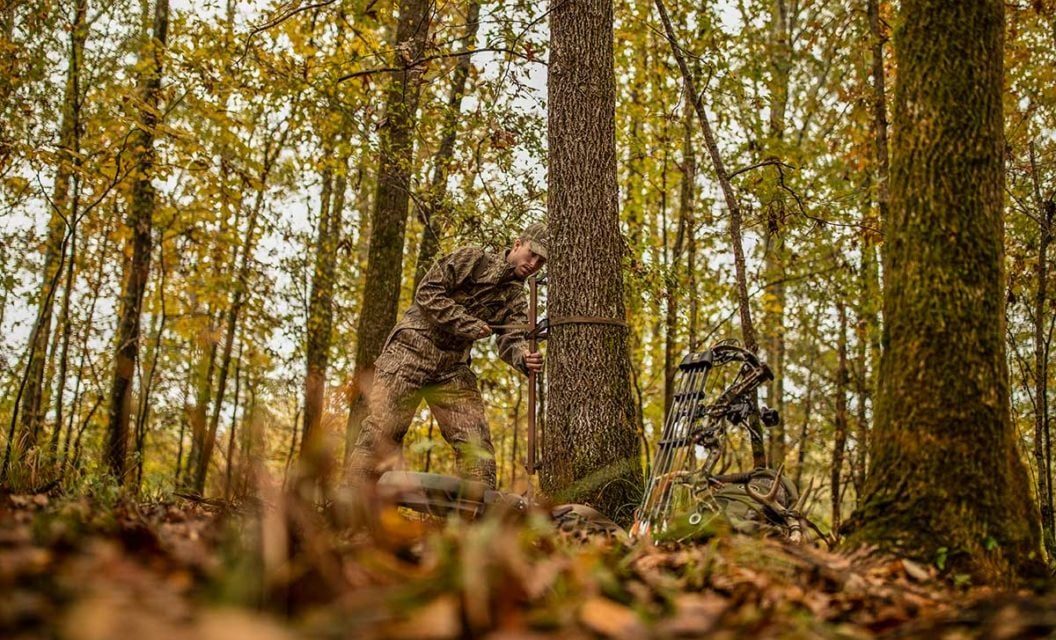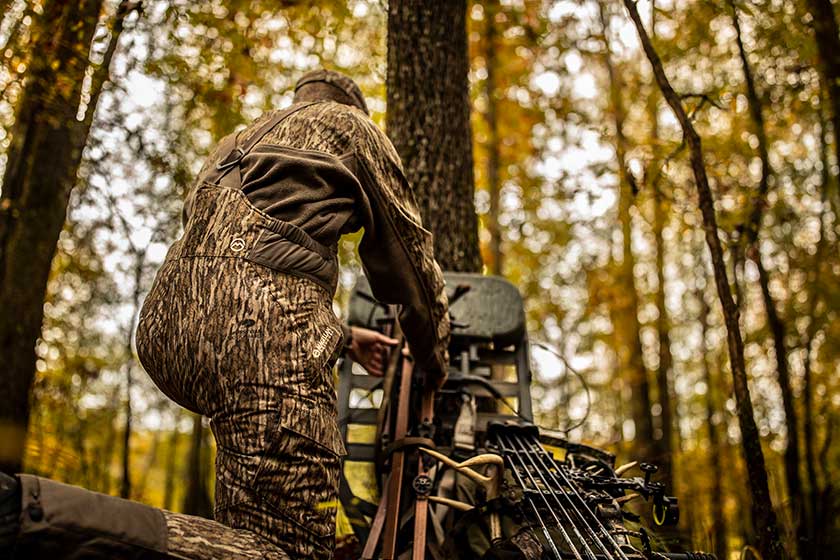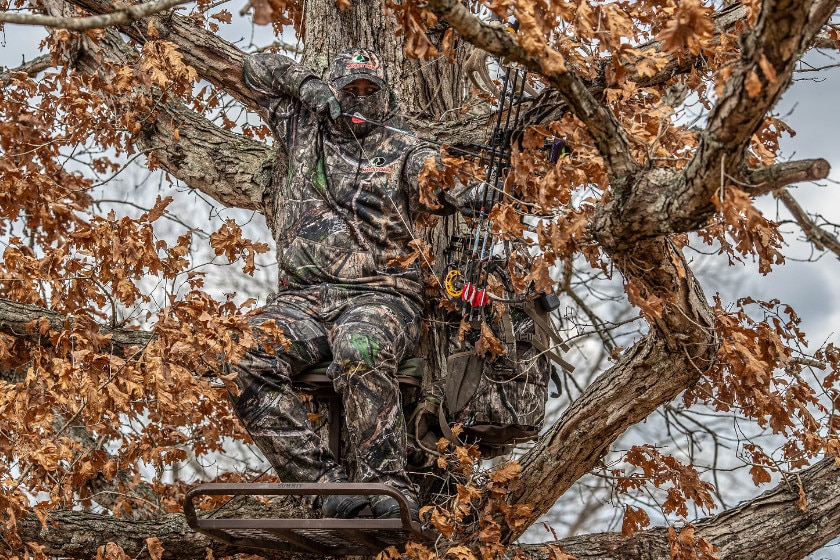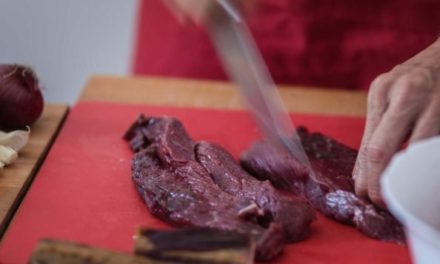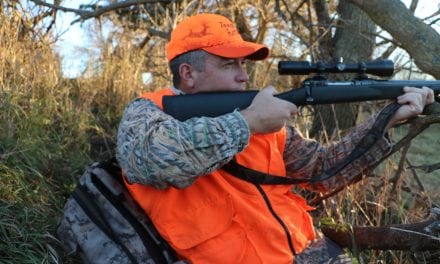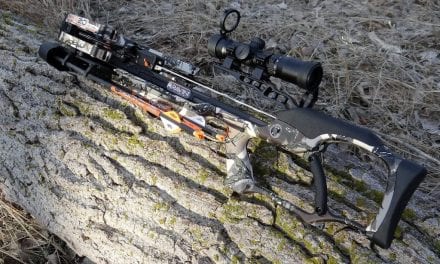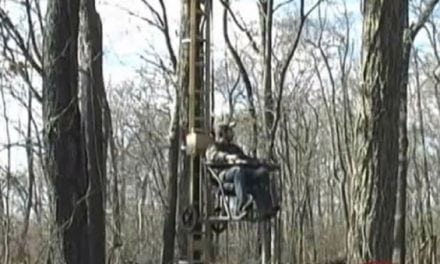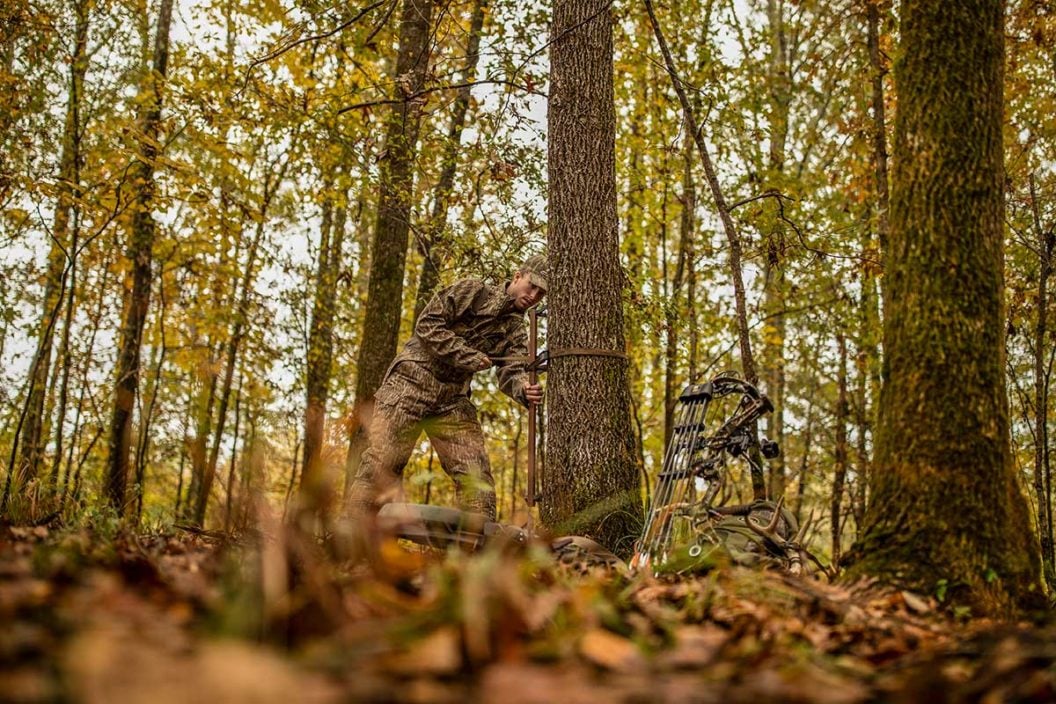
Hunting from a treestand has a lot of benefits, but it is not without risk. Dr. Alan Lazzara spent five years researching hunting-related visits to the Henry Ford Health System. His research indicated that hunters are two-to-three times more likely to be injured by a fall from a tree stand than from a firearm. Injuries often happen when hunters are climbing up or down from the tree stand, resulting in serious leg fractures and spinal cord injuries.
The Minnesota Department of Natural Resources also reports that the most common type of treestand injuries are fractures of the spine and extremities, followed by head and lung injuries. It’s a big problem. Most states do not officially document treestand deaths and injuries. New York is one of the only states that strives to document treestand accidents systematically. This began in 2018, not long after the state recorded six treestand deaths during its 2017 hunting season. Five of the deceased hunters did not have a full-body harness on. The sixth hunter was wearing one but it was not attached to the tree when he fell, so it did him no good.
There have been 33 documented nonfatal treestand falls in the state since record keeping began in 2018. Reporting treestand falls in New York is still not legally required, so that may still be just scraping the surface of actual incidents. In the years since documentation began, there have been two more in New York–one in 2020 and the other in 2021. Don’t become a statistic. Following some simple safety tips will help you stay safe when hunting in treestands.
Let TMA’s Standards Guide Your Decisions
A hunter should never let their feet leave the ground without strapping into a fall-arrest system or full-body harness that meets the Treestand Manufacturer’s Association (TMA) standards. Single strap belts or chest harnesses should not be used. Always use the full body harness in the manner it is designed to be used. There should be no slack in the tether while sitting. The TMA recommends that hunters never use homemade stands or any stand that has been altered, which can be hard for some hunters to accept. Maybe grandad built his own treestand from lumber back in the day and sitting in that stand brings you comfort and connection. That stand might seem safe and sturdy, but it’s probably better not to chance it. For a detailed list of products that meet industry safety standards, visit TMAStands.com.
Inspect Equipment Before and After Use
It can be tempting to just toss the body harness on and carry on your way. Instead, take the time to inspect it before putting it on and then again before putting it away. Tears and tangles can impede the way these products work. Recommended weight limits should be considered the maximum end of the spectrum. Adding more weight than the treestand is recommended to hold is a recipe for disaster, so don’t push those limits. The owner’s manuals and manufacturer’s information that come with treestands and harnesses are a wealth of information. Read them. Also, it’s well worth it to practice with your harnesses and treestand before using them in active hunting situations.
Use a Haul Line
Both hands should be free while climbing up into or climbing down from a treestand. To get gear and weapons up and down, hunters should use a haul line. A haul line is a rope or commercial cord that gets attached to whatever needs to be pulled up or let down. It needs to be sturdy with the correct length and diameter for the intended use. It should be attached to bows or firearms to transport them up or down. This applies to hunting packs too. Climbing with a backpack on can throw off a hunter’s weight distribution or even get caught on branches or concealment coverings on treestands. Getting tangled is an easy way to have an accident. The haul line should be utilized to get a pack where it needs to be.
Don’t Rush
This could be considered the golden rule of treestand safety. While climbing into, out of, or while hunting from a treestand, don’t hurry. Make slow, methodical movements, and don’t skip steps while climbing. Use the three point of contact rule: make sure that at all times you have three points of contact with the ladder or stand when moving. For example, when moving a foot, both hands and the other foot should be in contact with the ladder.
Also, hunt with a friend when possible. If that isn’t in the cards, at the very least tell someone where you will be hunting and the time of your expected return. Have a communication plan in place that includes emergency devices such as a cell phone, two-way radio, personal locator device, signal flare, or whistle. Make sure these devices are in a place that can still be accessed in the event of a fall.
READ MORE: How to Smartly Move Treestands During the Season
The post Treestand Safety 101: Don’t Be a Statistic and Follow These Basic Guidelines appeared first on Wide Open Spaces.

